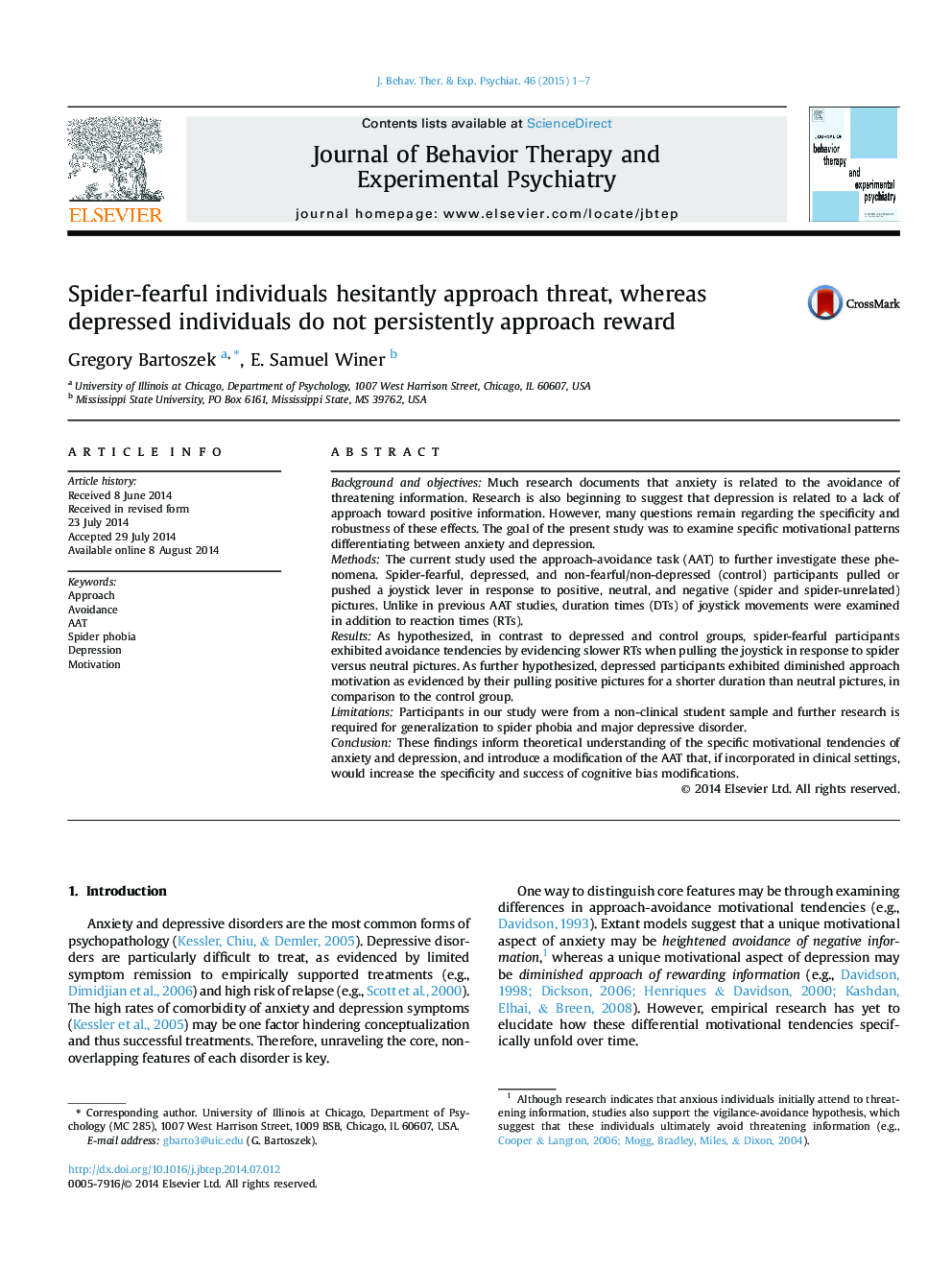| کد مقاله | کد نشریه | سال انتشار | مقاله انگلیسی | نسخه تمام متن |
|---|---|---|---|---|
| 910336 | 1473069 | 2015 | 7 صفحه PDF | دانلود رایگان |
• Spider-fearful and depressed people completed a modified approach-avoidance task.
• Spider-fearful people were more hesitant when pulling spider (versus neutral) pictures.
• Depressed people were less persistent when pulling positive (versus neutral) pictures.
• This is a novel example of differences in motivation between depression and anxiety.
• This version of the approach-avoidance task has unique clinical implications.
Background and objectivesMuch research documents that anxiety is related to the avoidance of threatening information. Research is also beginning to suggest that depression is related to a lack of approach toward positive information. However, many questions remain regarding the specificity and robustness of these effects. The goal of the present study was to examine specific motivational patterns differentiating between anxiety and depression.MethodsThe current study used the approach-avoidance task (AAT) to further investigate these phenomena. Spider-fearful, depressed, and non-fearful/non-depressed (control) participants pulled or pushed a joystick lever in response to positive, neutral, and negative (spider and spider-unrelated) pictures. Unlike in previous AAT studies, duration times (DTs) of joystick movements were examined in addition to reaction times (RTs).ResultsAs hypothesized, in contrast to depressed and control groups, spider-fearful participants exhibited avoidance tendencies by evidencing slower RTs when pulling the joystick in response to spider versus neutral pictures. As further hypothesized, depressed participants exhibited diminished approach motivation as evidenced by their pulling positive pictures for a shorter duration than neutral pictures, in comparison to the control group.LimitationsParticipants in our study were from a non-clinical student sample and further research is required for generalization to spider phobia and major depressive disorder.ConclusionThese findings inform theoretical understanding of the specific motivational tendencies of anxiety and depression, and introduce a modification of the AAT that, if incorporated in clinical settings, would increase the specificity and success of cognitive bias modifications.
Journal: Journal of Behavior Therapy and Experimental Psychiatry - Volume 46, March 2015, Pages 1–7
